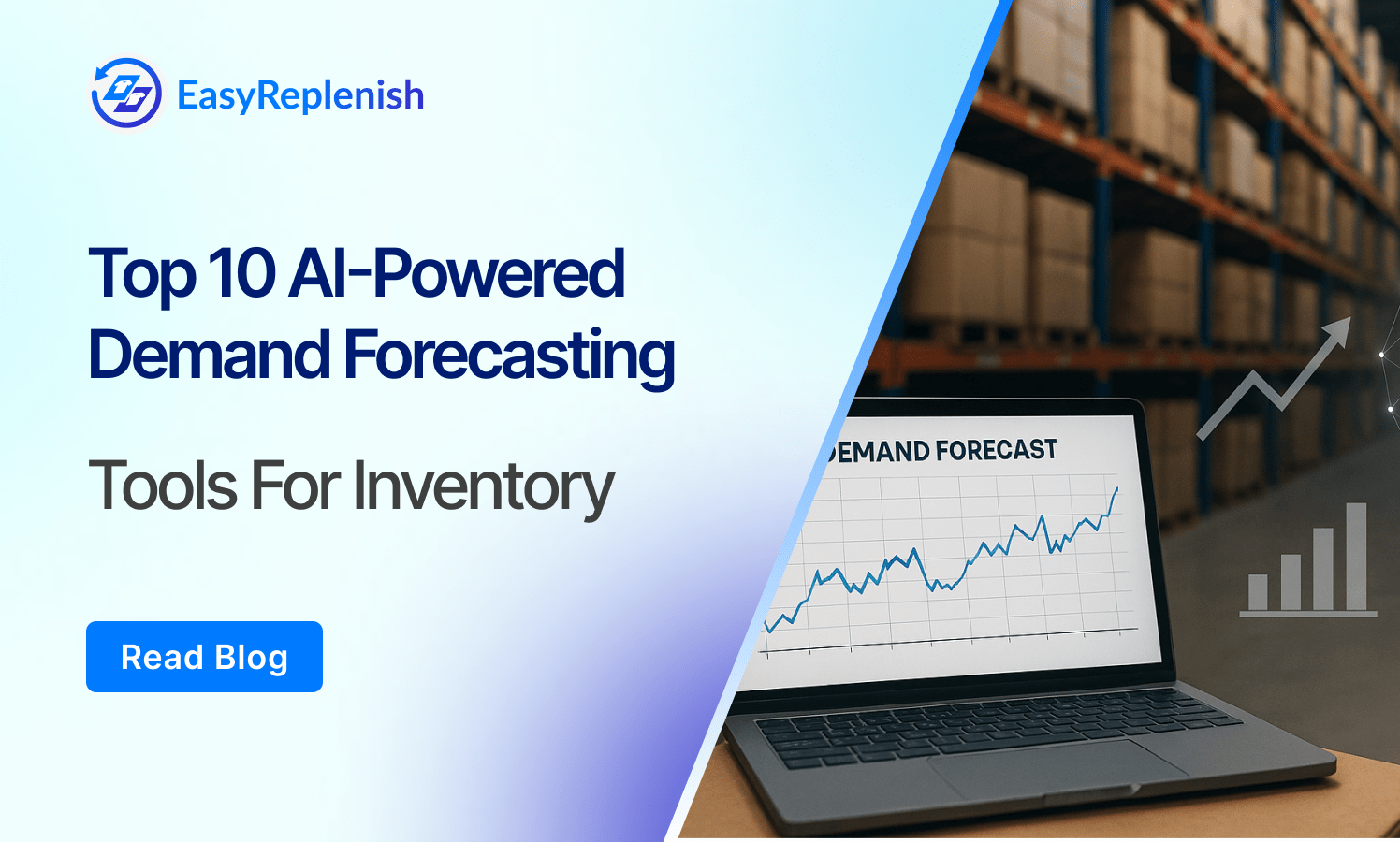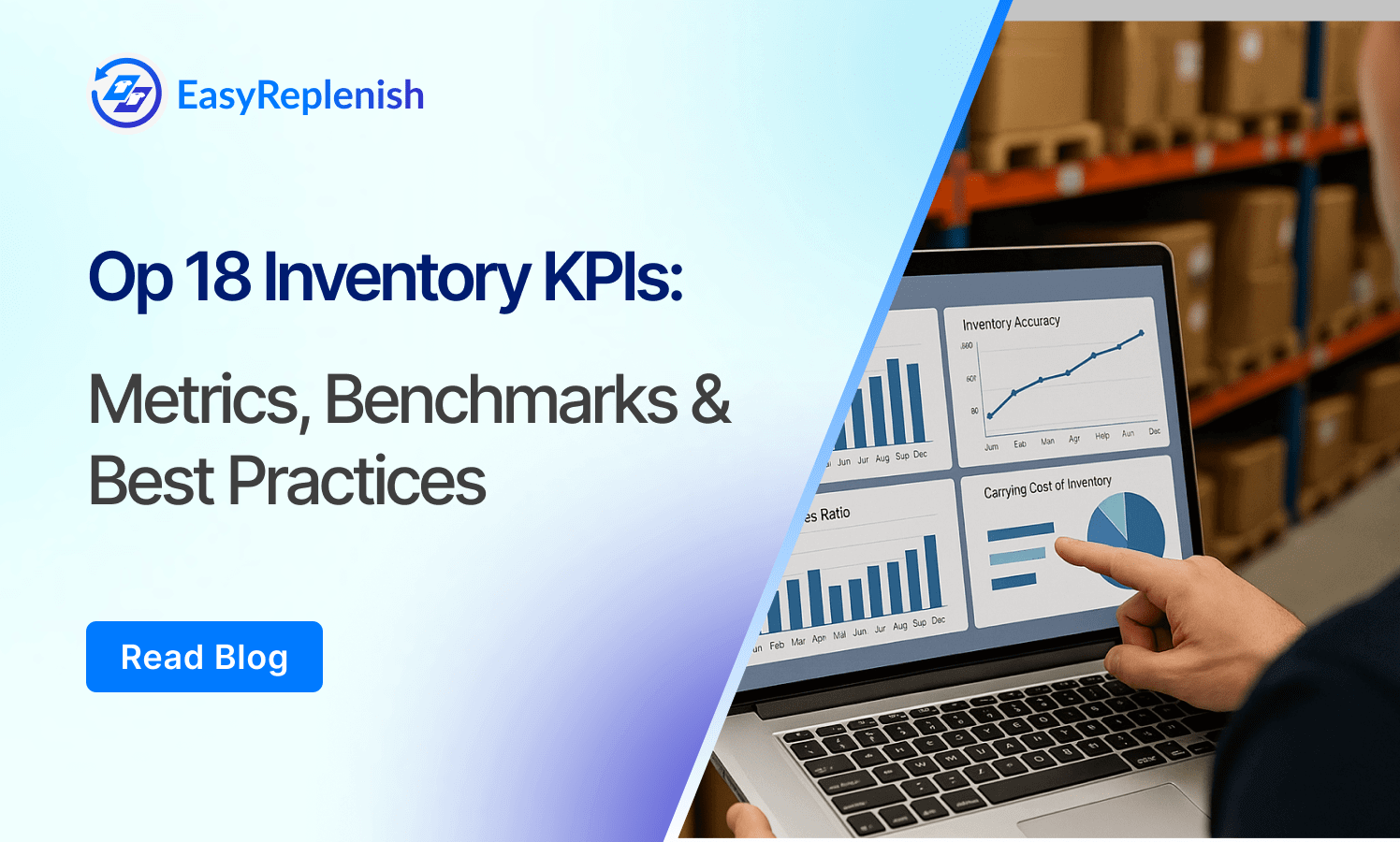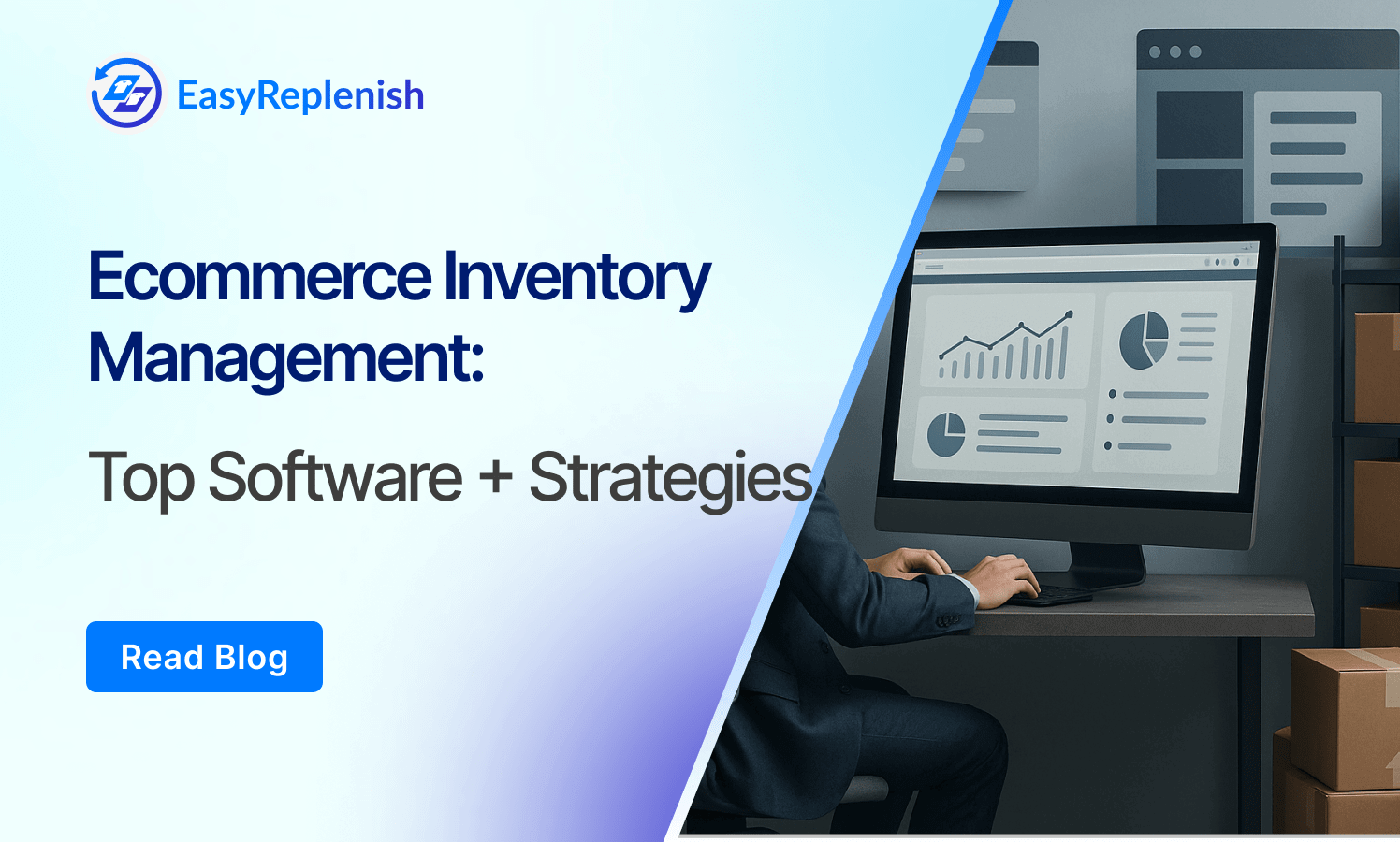Demand Forecast Accuracy: Metrics, Tools & Industry Benchmarks

Demand forecasting is no longer optional—it’s a critical function that directly affects inventory efficiency, supply chain agility, customer satisfaction, and profitability. Yet, even the most sophisticated forecasts are only as good as their accuracy. For D2C brands, retailers, and inventory-led businesses, knowing how close your forecasted demand is to actual outcomes isn’t just informative—it’s foundational.
Poor forecast accuracy results in excess stock, stockouts, misaligned replenishment, and wasted working capital. On the other hand, even small improvements in forecast precision can unlock major gains in inventory turnover, cash flow, and margin protection. This blog dives into the key metrics used to measure forecast accuracy, industry benchmarks, and tools that help improve forecasting performance at scale.
What Is Demand Forecast Accuracy?
Demand forecast accuracy refers to how closely your predicted demand aligns with actual sales or consumption over a given time frame. It’s the primary indicator of whether your forecasting models are reliable and actionable.
In simple terms:
If you forecast 1,000 units and sell 900, your forecast is 90% accurate. But if you sell only 300, your forecast missed the mark—despite good intentions.
But accuracy isn’t just about being close—it’s about being consistently close across products, channels, and time periods. That’s why businesses use specific quantitative metrics (like MAPE or RMSE) to evaluate forecast performance at the SKU, category, and even regional level.
It's also important to distinguish between:
- Accuracy: How close your forecast is to reality
- Bias: Whether you systematically over-forecast (positive bias) or under-forecast (negative bias)
By measuring both, businesses gain a much clearer picture of how forecasting is impacting operational decisions—especially in automated replenishment systems where errors quickly compound into inventory and cash flow problems.
Why Forecast Accuracy Matters for Inventory Optimization
Forecast accuracy isn’t just a metric—it’s a margin lever. Inaccurate demand forecasts have a cascading impact on nearly every area of inventory-led operations: from procurement and warehousing to cash flow, customer satisfaction, and profitability. For brands running lean inventory models or operating in volatile markets, even minor deviations between forecasted and actual demand can result in measurable losses.
1. Reduces Stockouts and Lost Sales
When forecasts underestimate demand, stockouts occur—leading to missed revenue, increased churn, and reduced customer lifetime value. Accurate forecasts allow teams to maintain optimal safety stock without overcommitting working capital.
2. Prevents Overstock and Excess Inventory
Over-forecasting inflates holding costs, increases risk of markdowns, and ties up cash in unsold goods. This is especially risky for perishable, seasonal, or trend-sensitive products where demand windows are narrow and liquidation margins are thin.
3. Enables Efficient Replenishment
Automated replenishment systems rely on precise demand inputs. High forecast accuracy allows reorder points, EOQ, and lead time buffers to be optimized—minimizing manual overrides and improving planning agility.
4. Improves Cash Flow and Working Capital Allocation
Better forecasts result in tighter inventory turns and less money tied up in slow-moving SKUs. This frees capital for marketing, product development, or scaling operations—critical for fast-growing D2C brands.
5. Strengthens Supplier and Fulfillment Relationships
Consistent forecast accuracy improves purchase order planning and load balancing across warehouses or 3PLs. It also helps vendors align production schedules, reduce emergency orders, and maintain fulfillment SLAs more reliably.
In short, forecast accuracy isn’t just a supply chain KPI—it’s a strategic input that directly influences your operational cost structure, service levels, and scalability.
Top Metrics to Measure Forecast Accuracy
There’s no single “best” metric for forecast accuracy—each serves a different purpose depending on your business model, data complexity, and product mix. Below are the five most commonly used, along with when and why to use each.
1. Mean Absolute Percentage Error (MAPE)
What it does:
MAPE measures the average percentage error between forecasted and actual demand. It’s easy to interpret and commonly used across industries.
Formula:
MAPE = (1/n) × Σ(|Actual - Forecast| / Actual) × 100
Use when:
You want a high-level view of overall accuracy across SKUs, especially when actual values aren’t zero. A MAPE of 10% means your forecasts are off by 10%, on average.
Limitation:
MAPE can be misleading for low-volume SKUs or when actual demand is zero, since dividing by zero creates infinite errors.
2. Weighted MAPE (wMAPE)
What it does:
wMAPE adjusts MAPE by giving more weight to high-volume SKUs, making the result more reflective of real business impact.
Formula:
wMAPE = Σ(|Actual - Forecast|) / Σ(Actual) × 100
Use when:
You have a skewed catalog with a few high-volume items that drive most of your revenue. wMAPE gives a more realistic picture of how forecast errors affect business outcomes.
Why it’s preferred:
Many modern inventory platforms default to wMAPE because it avoids MAPE’s distortion from low-volume SKUs.
3. Mean Absolute Deviation (MAD)
What it does:
MAD calculates the average absolute difference between forecast and actual values. It gives a raw unit-based error, not percentage.
Formula:
MAD = (1/n) × Σ|Actual - Forecast|
Use when:
You want to see the typical forecast error in units, useful for setting safety stock or reorder buffers. Especially valuable for planners managing by units instead of percentages.
Limitation:
Not normalized—so comparing across SKUs with very different sales volumes can be misleading.
4. Root Mean Squared Error (RMSE)
What it does:
RMSE emphasizes larger forecast errors by squaring the deviation. It's sensitive to outliers and highlights extreme misses.
Formula:
RMSE = √[(1/n) × Σ(Forecast - Actual)²]
Use when:
You want to penalize large deviations more heavily (e.g., when stockouts or overstock have a high business cost). Ideal for improving accuracy in high-risk SKUs.
Tip:
Use RMSE alongside MAPE or wMAPE to catch both general accuracy and extreme error cases.
5. Forecast Bias (Tracking Signal or % Bias)
What it does:
Bias measures whether your forecasts systematically overestimate or underestimate demand over time.
Formula (Bias %):
Bias = [(Forecast - Actual) / Actual] × 100
Use when:
You want to know whether your forecasting process leans high or low. A persistent positive bias = over-forecasting; a negative bias = under-forecasting.
Why it matters:
A forecast can be accurate on average (low error) but still biased in one direction—causing chronic overstock or frequent stockouts.
What Is a Good Forecast Accuracy? (Benchmarks by Industry)
There’s no universal benchmark for “good” forecast accuracy—acceptable error rates vary by industry, product type, planning horizon, and sales volatility. That said, most supply chain professionals use MAPE or wMAPE as their reference metrics, with target thresholds set based on category complexity and business risk.
Here’s a breakdown of realistic industry benchmarks for demand forecast accuracy:
1. Fashion & Apparel (D2C or Retail)
- Typical wMAPE: 25%–40%
- New SKUs or seasonal launches: up to 50%+
- Fashion brands face constant style rotation, trend-driven demand, and size/color complexity—making forecast accuracy more difficult. AI/ML-based forecasting can lower error, especially on repeatable categories.
2. Fast-Moving Consumer Goods (FMCG)
- Typical wMAPE: 10%–20%
- Stable SKUs with consistent demand: ~8%–12%
- FMCG brands benefit from high sales volume and repeat buying behavior, making demand more predictable—especially in established markets and channels.
3. Consumer Electronics
- Typical wMAPE: 15%–25%
- New product launches or promotional periods can push error higher due to uncertain uptake and price sensitivity. Bundles and accessories also skew base demand unless well-modeled.
4. Health & Wellness D2C Brands
- Typical wMAPE: 18%–30%
- Subscription models improve accuracy over time, but new SKU launches, ingredient trends, and channel expansion can introduce volatility.
General E-commerce / Multi-Category Retail
- Typical wMAPE: 20%–35%
- Larger catalogs often have a long tail of low-volume SKUs with unpredictable demand. Here, segmenting products by sales volume (A/B/C) and applying different models per group improves accuracy.
Key Factors That Influence Forecast Accuracy
Even within the same vertical, forecast performance varies by:
- Forecast horizon: Weekly forecasts tend to be more accurate than monthly or quarterly
- SKU maturity: Older SKUs with stable velocity forecast more accurately than new or seasonal items
- Data quality: Clean, structured historical data significantly improves model output
- External variables: Promotions, pricing, weather, influencer campaigns, or competitor activity often distort base demand
Rather than chasing a fixed benchmark, businesses should define accuracy goals by segment, monitor trends over time, and focus on continuous improvement through better models, enriched data, and tighter feedback loops.
Best Tools and Software for Forecast Accuracy Improvement
Choosing the right forecasting tool is critical—not just for generating predictions, but for continuously measuring, comparing, and improving their accuracy over time. Below are some of the most effective software solutions and platforms for demand forecasting, used by leading D2C, retail, and inventory-led businesses.
1. EasyReplenish
Best for: D2C brands, fashion, health & wellness, and growing e-commerce brands
EasyReplenish is a forecasting and replenishment platform built for modern, SKU-dense catalogs. It supports multiple AI and statistical forecasting models (like MAPE-optimized smoothing, ARIMA, Croston’s method), automatically tests model accuracy, and applies the best-fit algorithm per SKU.
Key features:
- Model-level forecast accuracy scoring (MAPE, RMSE, Bias)
- Automated replenishment suggestions
- Variant-level demand forecasting
- New SKU prediction using lookalike modeling
- Seamless integration with Shopify, WMS, and ERP systems
2. NetSuite Demand Planning (Oracle)
Best for: Mid-sized to large retailers and distributors using NetSuite ERP
NetSuite offers built-in demand planning features that support time-series forecasting, moving averages, and regression. It's ideal for companies already using NetSuite for inventory and financials.
Strengths:
- Integrated with supply and procurement workflows
- Allows forecast overrides by planners
- Forecasts based on historical demand, sales orders, or item usage
3. SAP Integrated Business Planning (IBP)
Best for: Enterprise supply chain teams with global planning needs
SAP IBP combines forecasting, S&OP, inventory optimization, and exception management in one suite. Its forecasting engine supports advanced machine learning and statistical models with strong bias/error tracking.
Strengths:
- Configurable forecast accuracy dashboards
- Scenario planning and consensus forecasting
- Deep integration with SAP ERP and S/4HANA
4. RELEX Solutions
Best for: Multi-location retailers, grocery chains, and large-scale planning teams
RELEX is a purpose-built retail forecasting platform known for its precision at scale. It automatically tracks forecast error across multiple hierarchies (SKU, store, region) and adjusts models accordingly.
Strengths:
- Real-time forecast accuracy feedback
- Multi-tier inventory optimization (DC to store)
- AI-driven promotion and weather-aware forecasting
5. Tools to Augment Forecast Accuracy
- Power BI + Excel Models: Still common for smaller brands, but limited in scalability and error tracking
- Forecast Pro: A desktop-based statistical forecasting tool for analysts
- Google Sheets + Python Models: Custom forecasting workflows for technical teams or startups with in-house data science support
6. What to Look for in a Forecast Accuracy Tool
When selecting a platform, prioritize:
- Support for multiple accuracy metrics (MAPE, wMAPE, Bias, RMSE)
- SKU-level model selection and tracking
- Ability to forecast new products without history
- Integrated planning and replenishment workflows
- Automated model learning and continuous feedback loops
FAQs
Q1. What is a good MAPE score for demand forecasting?
A good MAPE (Mean Absolute Percentage Error) score typically falls between 10% and 30%, depending on your industry and product complexity. For stable, high-volume SKUs in FMCG or health products, a MAPE under 15% is common. In volatile categories like fashion or seasonal retail, a MAPE below 30% is considered acceptable. The key is to measure MAPE by SKU segment and monitor improvement over time, rather than aiming for a fixed universal benchmark.
Q2. Which metric is better: MAPE or wMAPE?
wMAPE (Weighted MAPE) is generally more reliable than MAPE, especially for businesses with a wide SKU range or uneven sales volume. While MAPE treats all items equally, wMAPE gives more weight to high-volume SKUs—offering a more accurate picture of how forecast errors affect your bottom line. Most modern forecasting tools and inventory platforms use wMAPE as the default accuracy metric.
Q3. Can I measure forecast accuracy without advanced tools?
Yes, you can calculate basic metrics like MAPE, MAD, or Forecast Bias using Excel or Google Sheets, especially for small catalogs. However, this quickly becomes time-consuming as your SKU count grows. To scale accuracy tracking and model testing, brands often move to platforms like EasyReplenish that automate error scoring and model optimization across thousands of SKUs.
Q4. How often should forecast accuracy be evaluated?
Forecast accuracy should be evaluated monthly at a minimum, and weekly for fast-moving or high-impact SKUs. It's also important to track accuracy by forecast horizon—short-term forecasts (1–2 weeks) are typically more precise than long-range forecasts (3–6 months). Regular review cycles allow teams to adjust safety stock levels, improve model selection, and course-correct faster.
Q5. How does forecast accuracy impact inventory performance?
Accurate demand forecasts directly improve inventory turnover, reduce stockouts, and minimize excess holding costs. For D2C brands, it also supports better fulfillment rates, fewer missed orders, and improved cash flow. Poor accuracy, on the other hand, leads to reactive buying, higher markdowns, and lower service levels—especially during high-demand periods or product launches.





.png)





